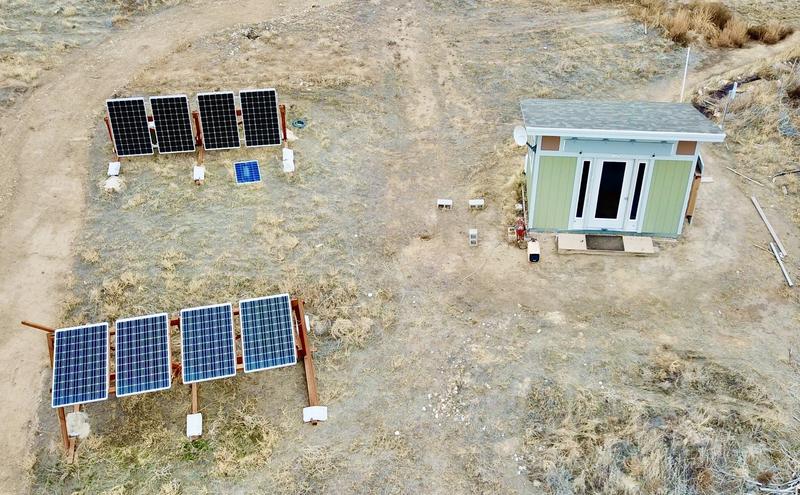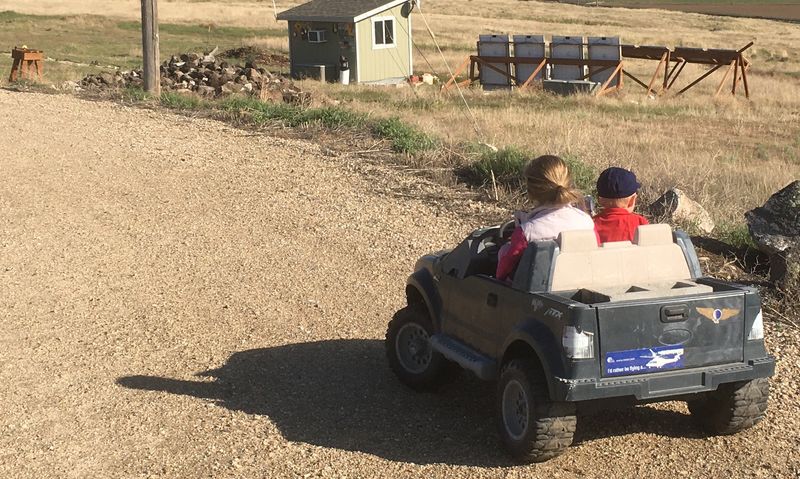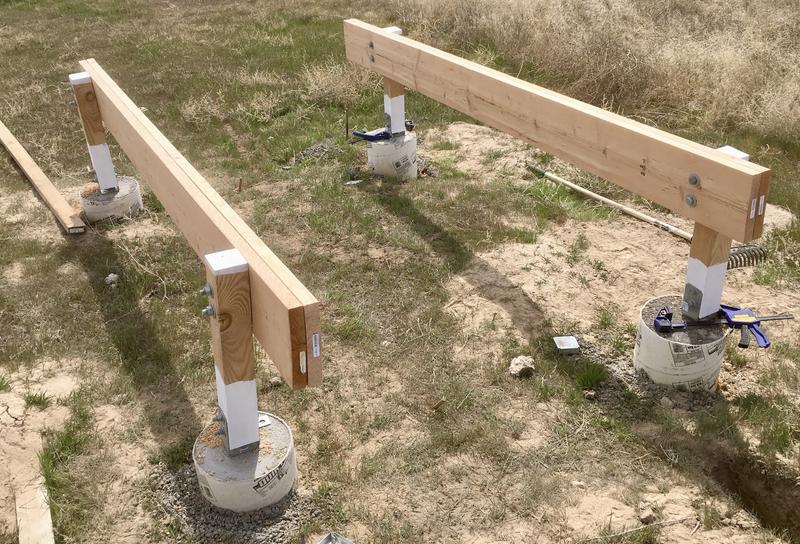As we settle into what looks like a new normal for the indefinite future, I decided to share some thoughts and reflections on various “WFH” setups I’ve had over the years. My working career has involved quite a bit of work from home - and I’ve learned some hard lessons over the years. I’ve also learned what works well, and have built what is, quite possibly, the ultimate home office - my Solar Shed! The only thing better than working from home is working from the property!
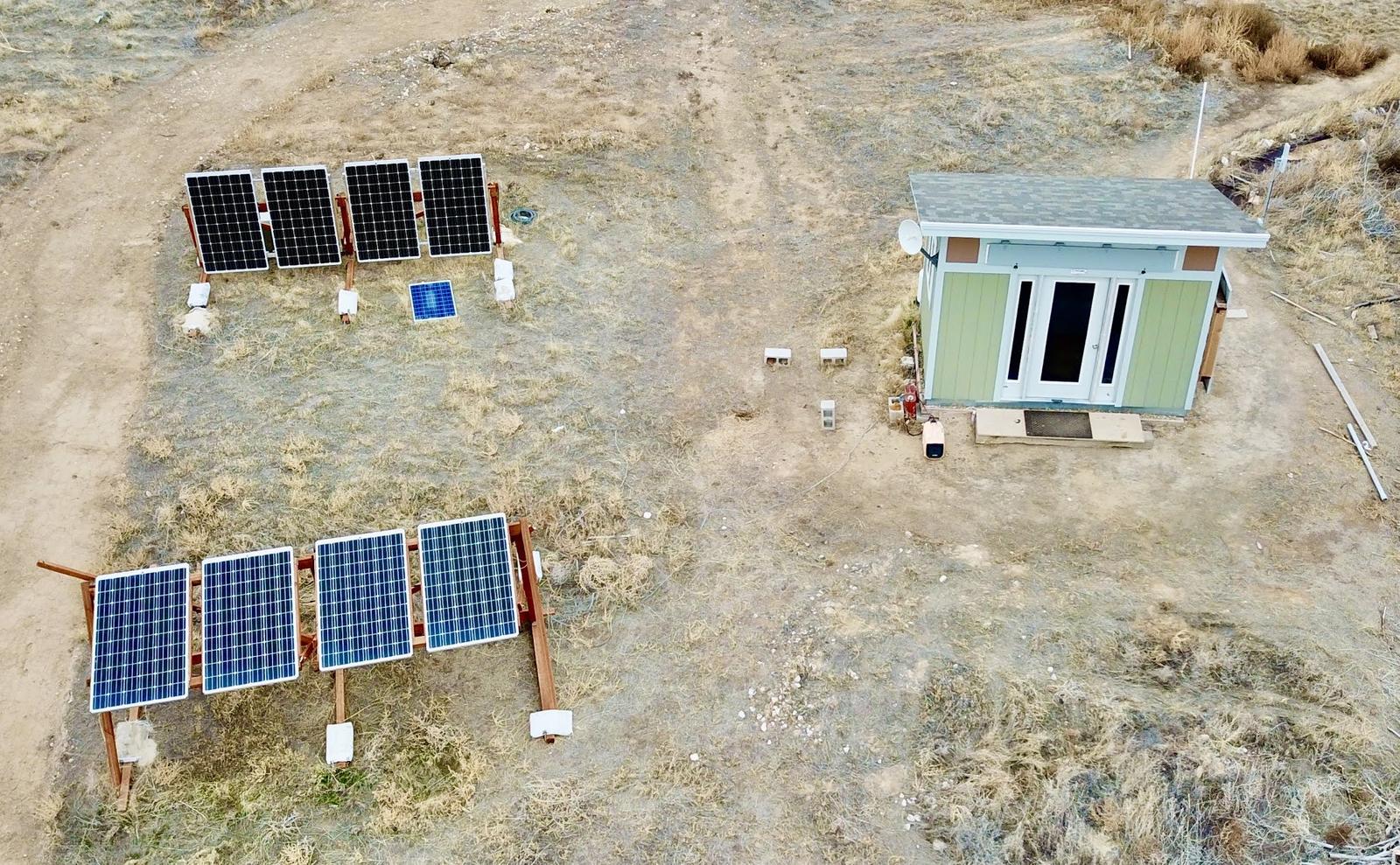
Stuck dealing with the fallout? Hoping to transition to WFH or just improve your WFH setup? Keep reading!
WFH: Our New Normal?
A few months back, I was greatly entertained as a massive number of people suddenly started being told “Work From Home Or Else” - and had to figure out all the details of this. Me? I’ve been doing this for years - about the only change I noticed was that some formerly exceptional VPNs started getting quite slow. Something about two orders of magnitude increase in use or something…
Certainly, many jobs don’t really permit WFH - you’re not going to drive a bus or fix an engine remotely (though you might consider it if you have a shop at home). But many people do have jobs that, technically, could be done from home - if the various pieces line up.
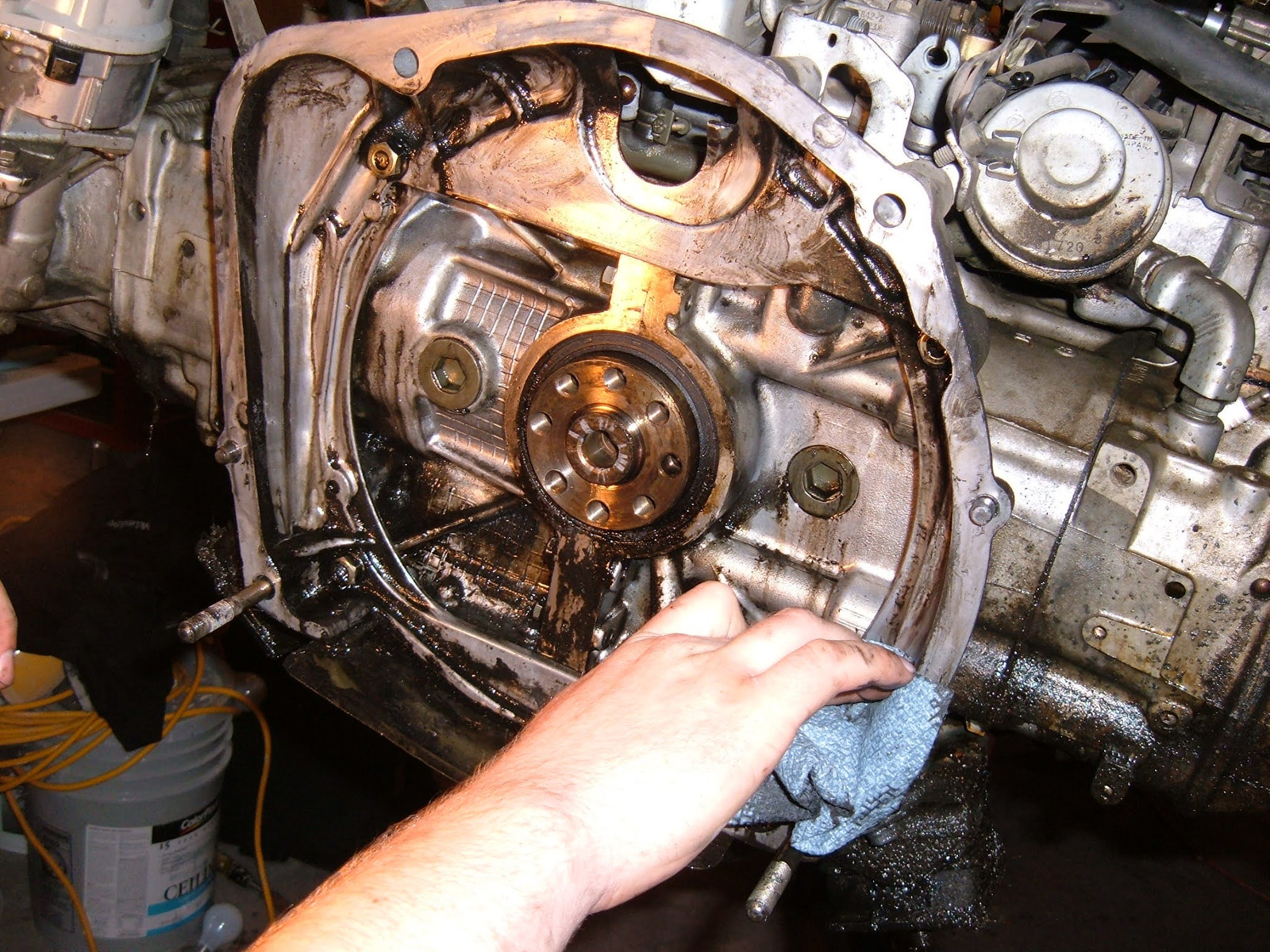
One of the most important pieces, in my experience, is your workspace. To be consistently productive from home, you need a good place to work from - and that’s not always easy to come by.
So I’ll make the bet here - WFH is going to be an awful lot more common than it used to be, and if you can make yourself a good workspace for it, you solve many of the issues with working from home before they even happen!
Places I’ve Worked (and Workspaces I’ve Suffered Through)
Perks of a couple decades working: You learn what workspaces are awesome and what are less so. Unfortunately, the trend has been rushing headlong to “less so.”
One of my first jobs out of college involved being the back room network engineer for a little startup wireless ISP/business computer support company. I was given a box with a few different types of radios in it, some reference manuals, and was told, “Make these work - oh, and build a management system for them.” So I did. I worked in a corner of the finished office for a while, and as the company expanded, they rented the back garage attached to the office and built out some space out there. I moved my desk out there to get out of the way, and for a few months, it was an amazing place to work. I was left alone with my radios, my workbenches, my management interfaces, and nobody complained about the row of monitors or the roar of an SGI Octane (behind the half cube wall thing here). Plus, there was bench space where I could set up radios and point them at each other across the bench for testing.
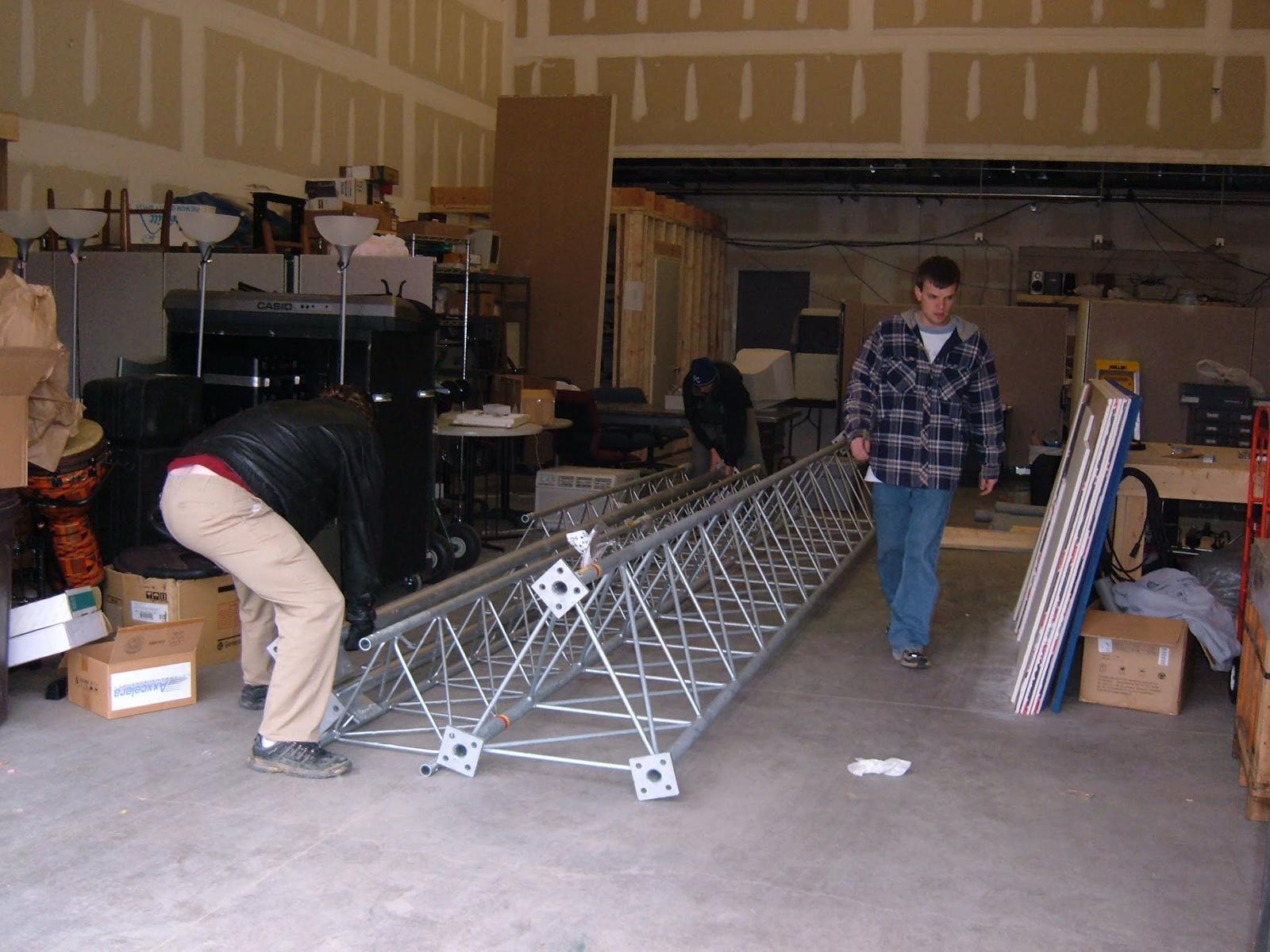
Unfortunately, as the company grew, more people got hired, and many of them ended up back in my area doing system builds, repairs, and the like. My productivity fell from constant context switching. Some of the freshly hired bench techs would ask the nearest person for help with just about everything, and that person was usually me. Some days were nothing but a constant stream of interruptions - and this was long before open offices were a thing.
My favorite place to work (before my current office) consisted mostly of shared offices (unless you had been around for a while - then you could get a single office). These had solid and mostly soundproof doors. Beyond that, there were lots of lab spaces scattered around for getting things done - usually heads down sort of labs, sometimes run with task lighting and dim ambient lights. The hallways between offices and labs were fairly large, and people often had their doors open as an invitation to drop in and discuss some problem or other. But if your door was shut, or you were heads down in a lab, people generally left you alone to work.
The main productivity destroyer there was an endless chain of meetings. There were plenty of weeks where, at the end of the week, I’d attended many meetings, had many discussions, written plenty of emails, but I hadn’t really accomplished much. Some of my older, wiser coworkers set strict limits on meetings. They would only attend meetings in the morning and wouldn’t accept a meeting invite for anything past 45 minutes without a very, very good reason.
I’ve also worked in what, by most standards, would be considered a hip, modern, open floorplan office that got progressively more “open floorplan” (“hellscape”) over time. It wasn’t Facebook bad, but it was getting there!
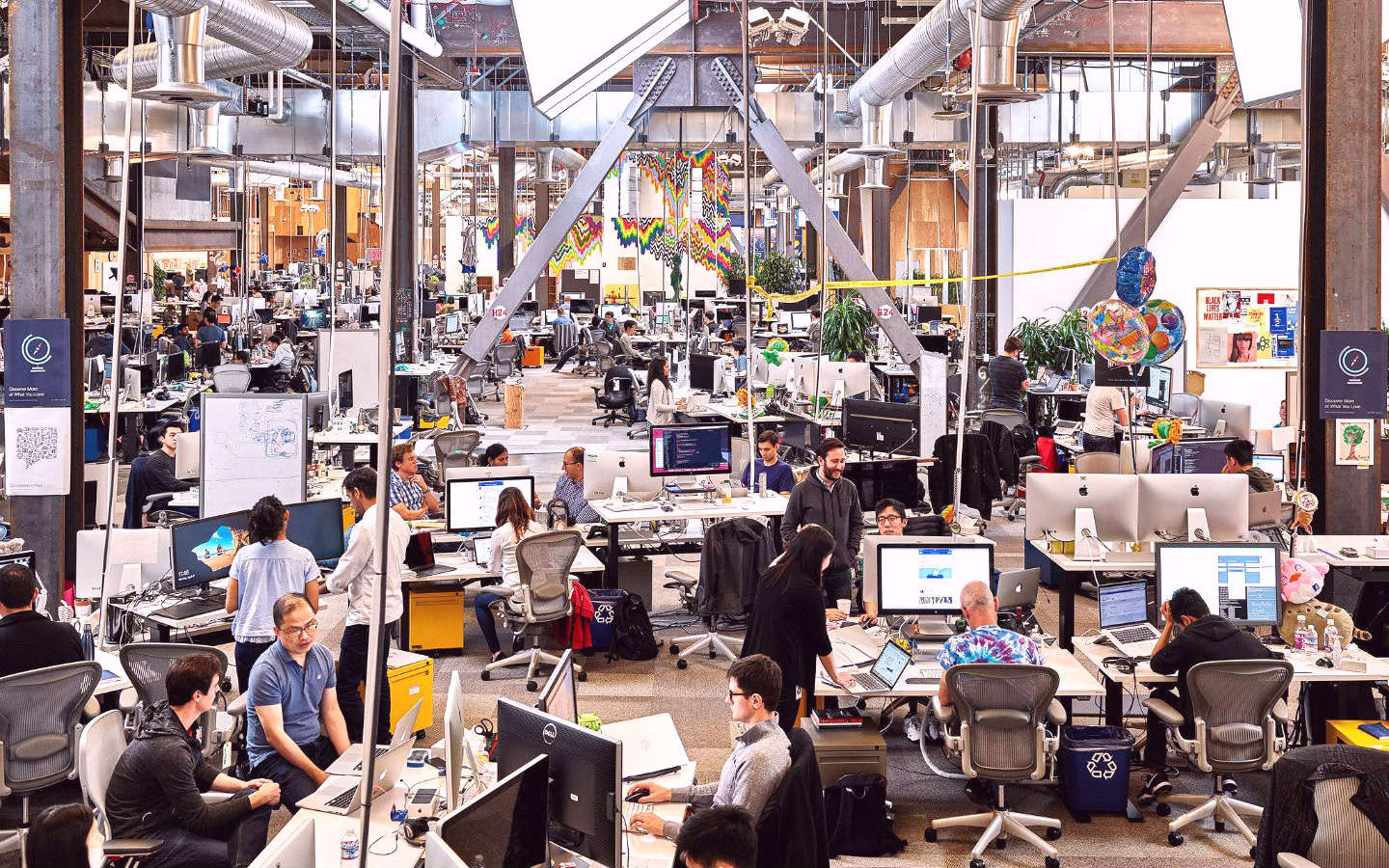
An open environment with your team (private space for the team) works decently enough. There’s usually some sort of organic team schedule that evolves over time, and often quiet (or quieter) times, so it can be OK (not great, but at least OK). Of course, this will never last. You’ll rapidly end up with multi-team open areas because “more desks, less cost.” I’ve worked in this environment for a while, and it’s very, very difficult to get deep, technically complex work done. There’s always a distraction - even if you don’t want one. There’s always someone, somewhere, talking about something that might be interesting. If you’re doing the type of work that requires going deep into a problem, keeping dozens or hundreds of pages of reference material more or less current in your head, and solving weird problems - this environment is just terrible. Drowning out the noise basically requires headphones and music, which are not an optimal way to focus - but it’s better than the alternative of no headphones and hundreds of voices.
I know it’s cheaper and more “flexible” than having actual offices for workers (I’ve heard arguments for “serendipitous encounters between coworkers” tossed about as well), but it takes what are, generally speaking, highly paid tech workers, and puts them in an environment that makes them _bad at doing their jobs. _I’m not the only one saying this, either - apparently, 58% of high performance employees (people who are paid a lot to accomplish a lot) feel the same way. If people are having to WFH or schedule a conference room to get actual deadline-based work done, can you really call it a good office environment?
Suddenly, The Solar Shed!
After years of this nonsense, I’d had quite enough and moved to “not quite the middle of nowhere.” We’ve got some space, and I finally had time to do an office as I wanted. Initial plans were to convert a shipping container, but after plenty of research, I decided that would be more trouble than it was worth. Instead, I converted an 8x12 Tuff-Shed into what is, quite possibly, the ultimate little workspace.
Why not a shipping container? They would make an awesome office, but on further research, shipping containers are kind of a challenge to fit out. You need closed cell insulation sprayed on the inside to avoid condensation issues, the flooring is not ideal for long term occupation unless you replace it (depending on the preservatives applied and what spilled during service), and the walls are quite difficult to punch holes in - you either chew through sawblades or need a cutting torch, which rather prohibits modifications later in life.
The Tuff-Shed, though? Just about perfect! I’ve got a rather nice desk on one end, a well equipped lab bench on the other end, and enough stuff in the middle to keep it powered, lit, and comfortable! It’s not a multi person workspace in terms of size, but for one person, it does beat many other options (though at many companies, this much space would be a two or three person office)! One might think I’m power limited, running on solar - and I am, for about a month of the winter. The rest of the year? I’m good during daylight hours! I have enough battery to work at night if I want, but I normally don’t.
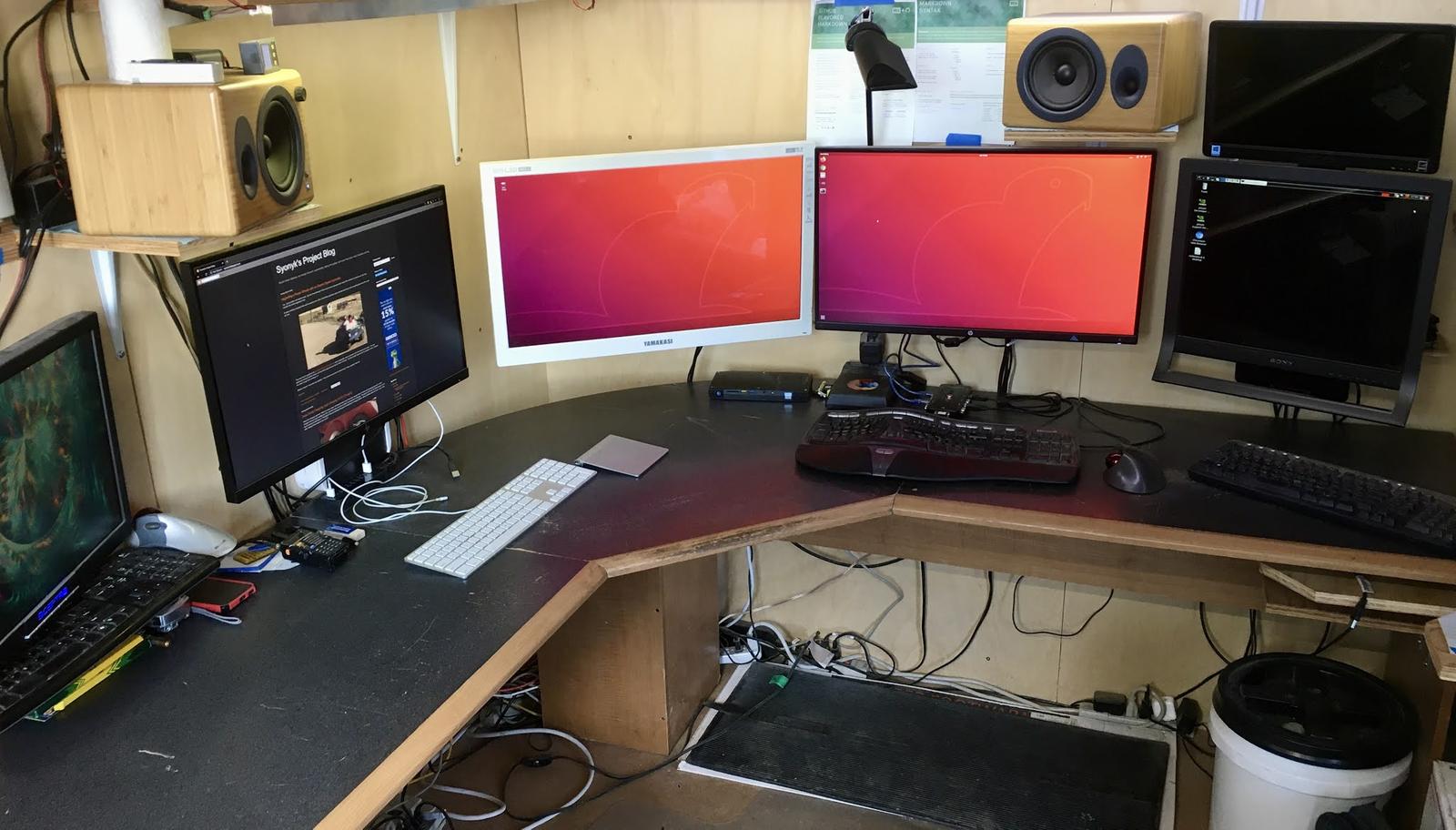
Why did I build this, specifically? What can you do that’s similar? Let’s back up a bit.
Combined Work/Personal Spaces
The first thing most people try for a home workspace is just to use their personal computer space! If you’re the sort to WFH, you very likely have a computer desk, monitor, etc. Why not use the same space? Or, failing that, maybe you’ve just been working from the kitchen table.
It works, briefly. It’s better than nothing. But for sustained WFH? This is a terrible idea. Trust me - been there, done that, learned the lessons.
The biggest issue with having mixed work and personal space is that you don’t really have a separation between, well, work and personal. It’s hard to fully focus on work when working, and it’s hard to fully focus on personal stuff when not working. I’ve had fully merged spaces/systems/etc before, and the problem is that you find yourself, in the evening, going in for some personal project, and doing work instead. I cannot count the times I went in to “check something for 15 minutes” and ended up in some web/sysadmin task for hours. This is OK if you’re single with no social life, though far from ideal. With a family? Don’t do it.
In some remote work circles (web development tends this way, or at least used to), this sort of mixing is normal. Fight it. You don’t want to be oncall 24/7 for work unless you’re getting paid for it. And if you are? Find another job. Perpetual oncall ruins your life. Also been there, suffered through that.
Separate Spaces/Computers
If you’re going to work from home, you really need a separate space - or, at the minimum, separate computers and a way to convert a space from “work” to “home” at the start/end of the day. This separation is absolutely vital for sanity purposes, both work and personal.
The best option is to have separate computers, and a separate workspace. Work is work, the rest of the day is not, and you’re not hooked up with work stuff in the evening.
If you do have to share workspaces, though, try to separate out work and not-work as best you can. Ideally, if you’re new to the whole WFH thing, work will have given you a computer. Use that for work, use your personal computers for personal use, and don’t blend the two. In addition to helping enforce separation (you can’t check work email without waking your work computer up), blending the two can just turn into a nasty mess. I’ve known people who have merged work and personal computers for convenience, and it rarely turns out well. Just say no.
Start off with a few computers and the whole thing is easier!

That separation policy goes for phones, too. It would be super convenient to have everything on one phone, right? It is - for your employer, because you’ll be thinking about work at 9PM when you just happen to check work email. Don’t fall into this trap. Have a separate work phone you can leave behind, and keep your work and personal devices separate. If you’re not working, don’t have your work phone near you.
With that out of the way, how do you configure your space? I’ve got some advice here, too.
Monitors, Desks, Keyboards, and KVMs
This next section should be treated as something along the line of “Ideal goals” - subject to your actual workspace. I’m not going to give you permission to go crazy and spend $10k on titanium monitor stands, but if you’re going to work from home, you should spend some money on the infrastructure. Pull it out of your commuting budget, if this is all new to you.
The first important thing is a desk. Buy a good one, build one… something. I’m not a huge fan of standing desks, but I also have quite a few acres to wander around on during the day for movement. A real downside to standing desks (especially the motorized kind) is that they take an awful lot of vertical space. I like my shelves and monitors.
Find a way to either fix your monitors to the wall or to your desk with stands that don’t sit on the desk. Wall mounts are far cheaper. Most modern monitors are pretty easy to VESA mount, and even older ones usually have some way to adapt to it (though the process on an old Catleap monitor of mine… not trivial). The desk space savings are simply massive! Go get a sheet of 3/4” plywood if you need it, cut it down, and mount it to the studs. Then, you can mount your monitors to the plywood wherever you want, not having to worry about hitting something more solid than drywall. Space them as needed, and pay attention to how the mounting arms bend if you’ve got more than a few. Sometimes you can’t make them do what you want without a bit of creative mounting.
You’ll occasionally hear me going on about the miracle of plywood walls. Stuff like this is why. I can mount a monitor wherever I want, and not have to find a stud for it. The plywood is more than strong enough to hold a typical 27” monitor on an arm.
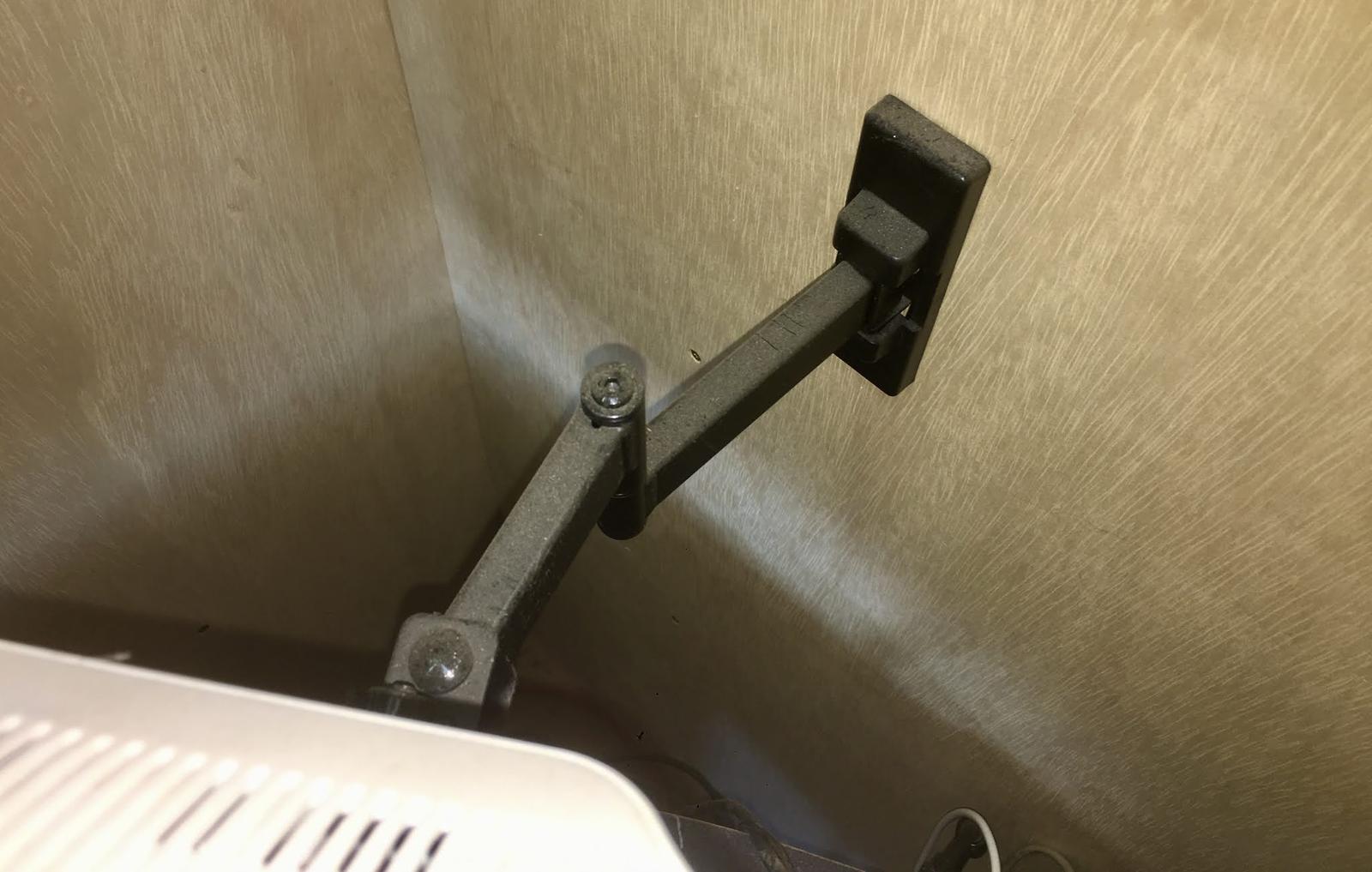
Finally, get some tolerable USB KVM switches - but you don’t need to go crazy and have 4k ones, because most modern monitors have multiple inputs. Just get something that lets you switch the keyboard/mouse around, and use the monitor input select to switch between computers if needed. It makes things a lot neater than having a ton of keyboards shuffling around, and you can use one keyboard for multiple monitors, if needed (if one is something like a status display or a little project box).
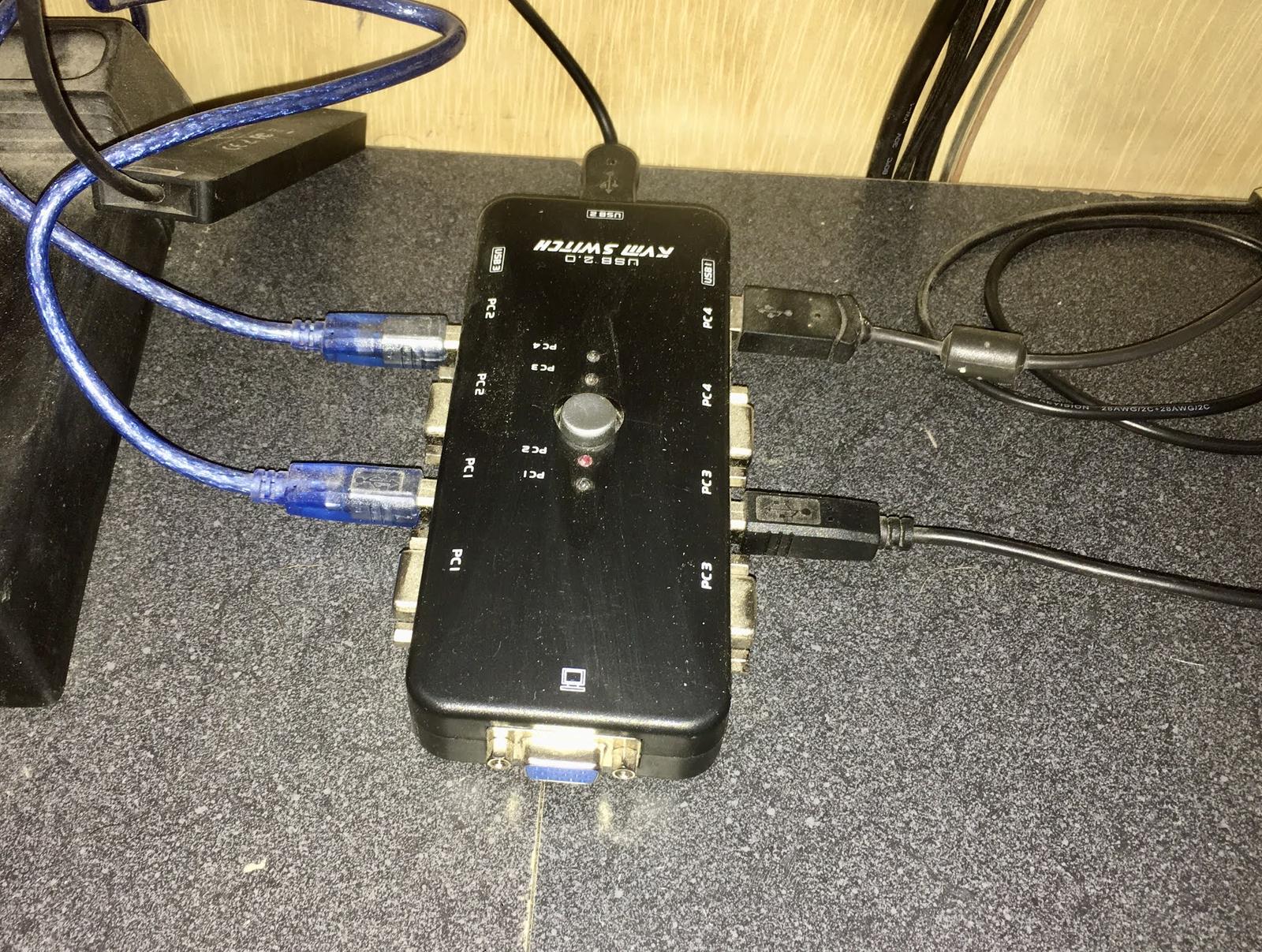
Yes, I know about things like Synergy. No, you probably shouldn’t be using them with a work from home setup. With some VPN configurations, they won’t work anyway (a halfway common VPN configuration blocks local network access while the machine is hooked up to the VPN). Use USB KVMs and save your sanity.
What They Don’t Know…
Obviously, you should abide by any particular corporate security policies in place. But within the bounds, you can sometimes make things work a little bit easier at home than in the office.
I’m not going to discuss just how many weird little adapters I’ve made/modified/etc with the soldering station in my office, or how many times I’ve whipped out a little oscilloscope I have laying around to verify that some signal is on the desired pin. It’s far faster to just verify this than to troubleshoot a few layers of “I’m not sure which layer is misconfigured.”
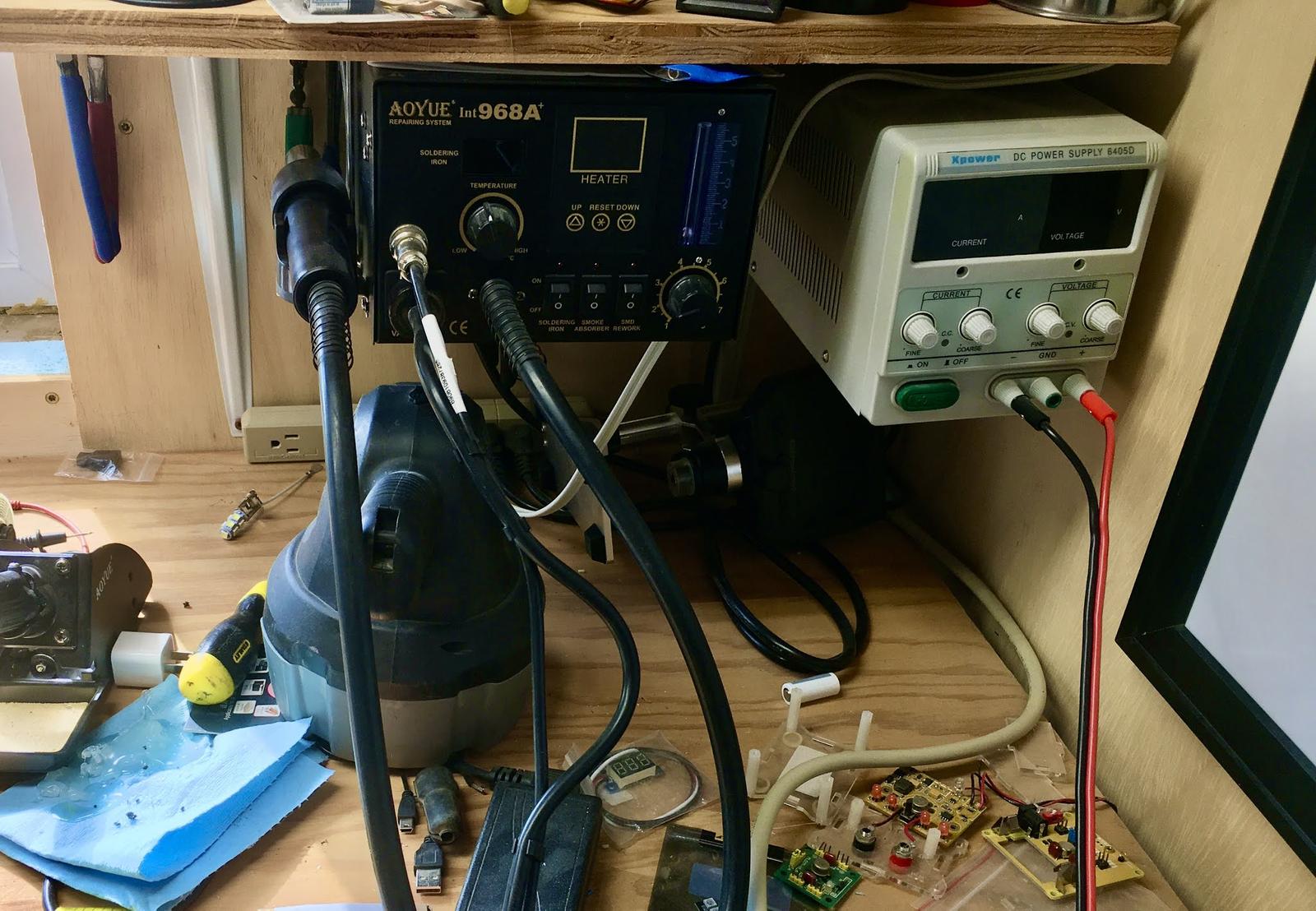
On the other hand, you know what’s awesome in a home office (at least as long as you’re not annoying other people)? An epic set of speakers! Again, no need to go crazy, but headphones suck, everyone knows headphones suck, so skip the headphones and just get something for the… uh… headphone-less video conferences. Yes. High quality audio is vital for an optimum video chat experience. And the rest of the time. A nice set of bookshelf speakers and a good DAC solves a lot.
If you’ve no idea what to buy for that, just go get a used set of Audioengine speakers on eBay. Everything they make is solid, and if you get the powered sort with a built in DAC, even a computer without a good sound output jack can put out some excellent music.
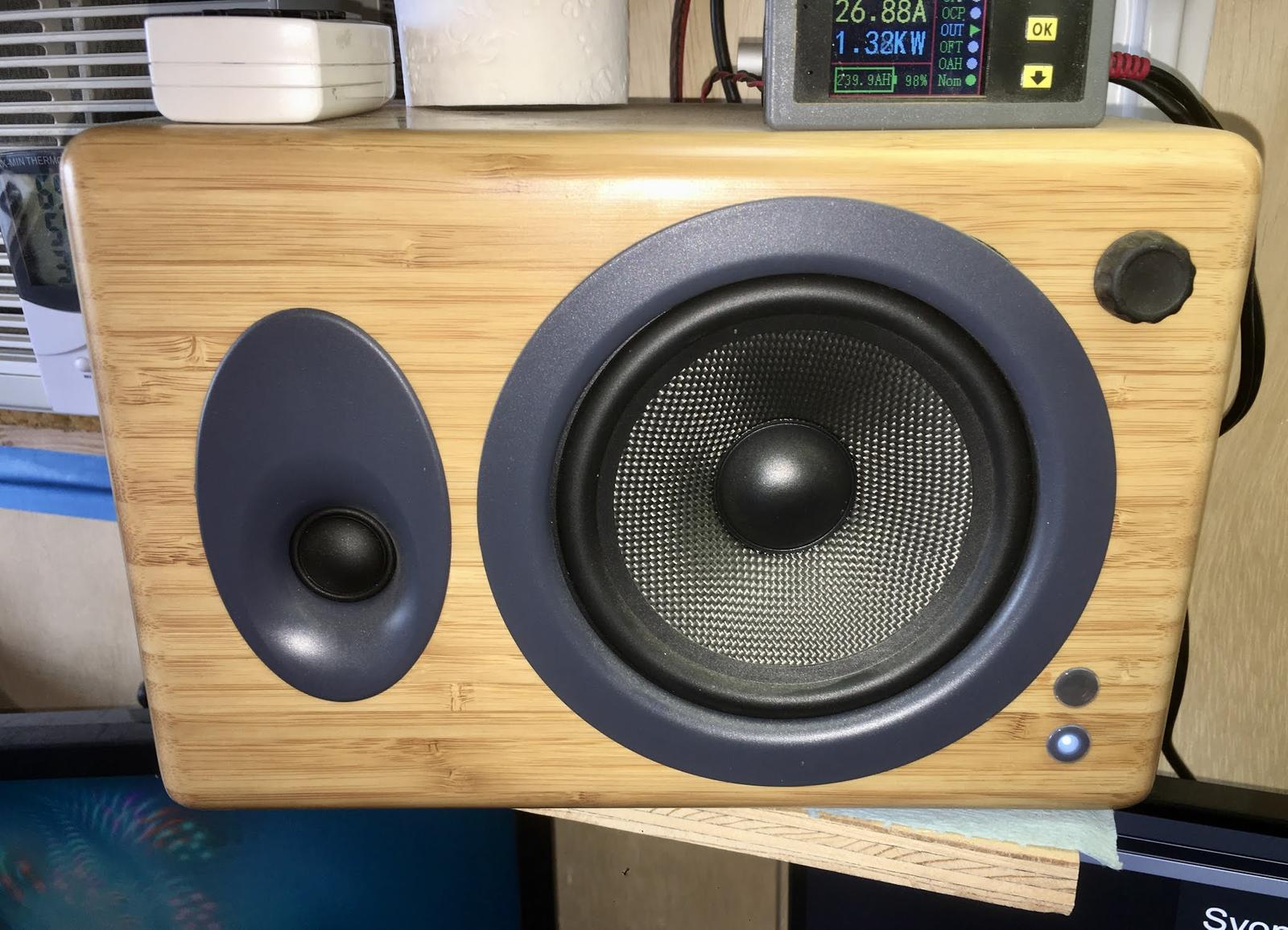
On the other hand, you may be surprised by how little you actually need music in the background when you don’t have constant distractions. I rapidly stopped needing aggressive metal to drown out the conversations when there weren’t any conversations to drown out.
You Really Need Dedicated Space
You can do a lot of these things in a “home” space - but if you’re going to be working from home indefinitely, you really need to be figuring out how to get a dedicated workspace. Working from the table, or your home office, or a corner of the bedroom works - for a period of time. It’s not good for long term, and it will drag on you trying to do it long term. Been there, done that, suffered the various consequences.
If it looks like you’ll be in this for the long haul, start figuring out what you need to do. My preferred option, of course, is a Shoffice: A Shed Office. Get yourself a Tuff-Shed or similar, insulate the inside, build it out, run power to it, and you have an absolutely amazing workspace for not that much money (under $10k, fully fitted out). For people with a husband/wife and kids at home, this option is nearly perfect. You’re still “at home,” but you’re not “in the house.” I’ve been doing this for 4 years now with great success.
Unlike a “coworking space,” you’re still close enough to run up to the house for lunch/bathroom breaks/random walks/etc. You can also customize the office to your heart’s content. Something needs to move? Just move it. But you’re still physically separate. If the kids are making noise, it doesn’t matter. If you want to just turn up some Sabaton during naptime? No problems. It really is the best of both worlds.
I built my office to be a productive space for work - and it is absolutely everything I hoped for. There are a handful of things I’d do differently if I built it again, but they’re minor things and in no way inhibit the overall productivity of the space. It is, by far, the best office I’ve ever had. Plus, I can modify it as needed without having to ask permission! If I want to mount a little shelf behind a monitor for my light ARM desktop (currently a Jetson Nano)? I just do it!
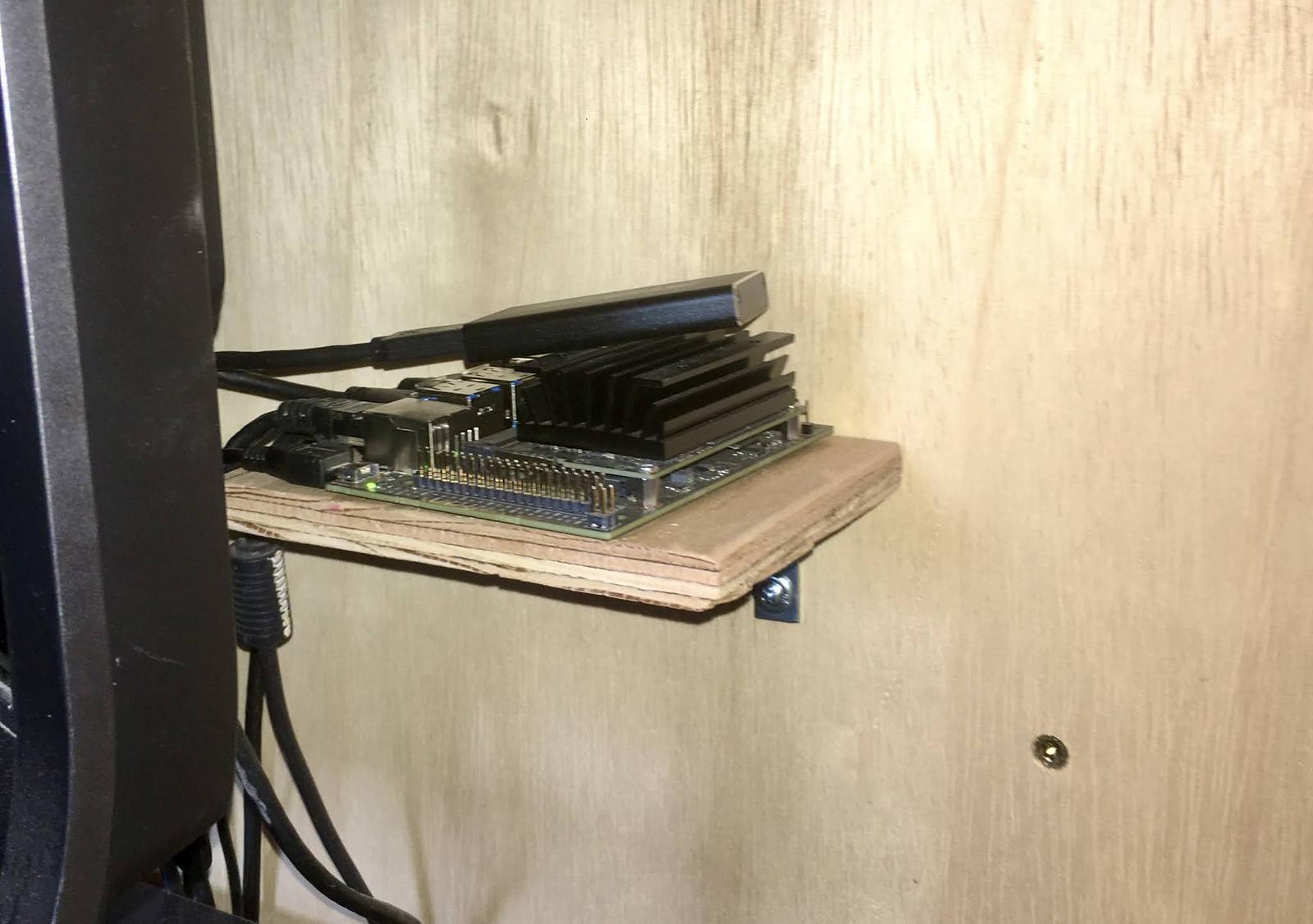
Should You Solar Shed?
This, then raises the obvious question: Should you build your own solar shed?
No. You shouldn’t.
You should build a grid tied shed office (“Shoffice”) unless you have some massive interest in off grid power systems or some other compelling reason to be off grid (off the power grid, for those who can’t tell what I’m talking about and whine that I have an internet connection).
The cost of my power system (even with free sun) is far more expensive than just having grid tied power would be - and it requires a willingness to really learn to operate the office. I see a lot of people asking for some sort of solar magic that works year round and does everything they need without having to pay much attention to it, and that’s just not possible for something like an office. Even being heavily overpaneled, with a good sized battery bank out back, I still have to run a generator in the winter for a week or so, because I just can’t get any power out of the sky. I’ve got a decent sized kerosene lantern (Dietz Jupiter) to use for light and heat on mornings like that, because localized heat and light are really useful - I heat my hands and light my workspace instead of heating the whole office. Yes, I’ve written embedded code by kerosene lantern light. Such is my life!
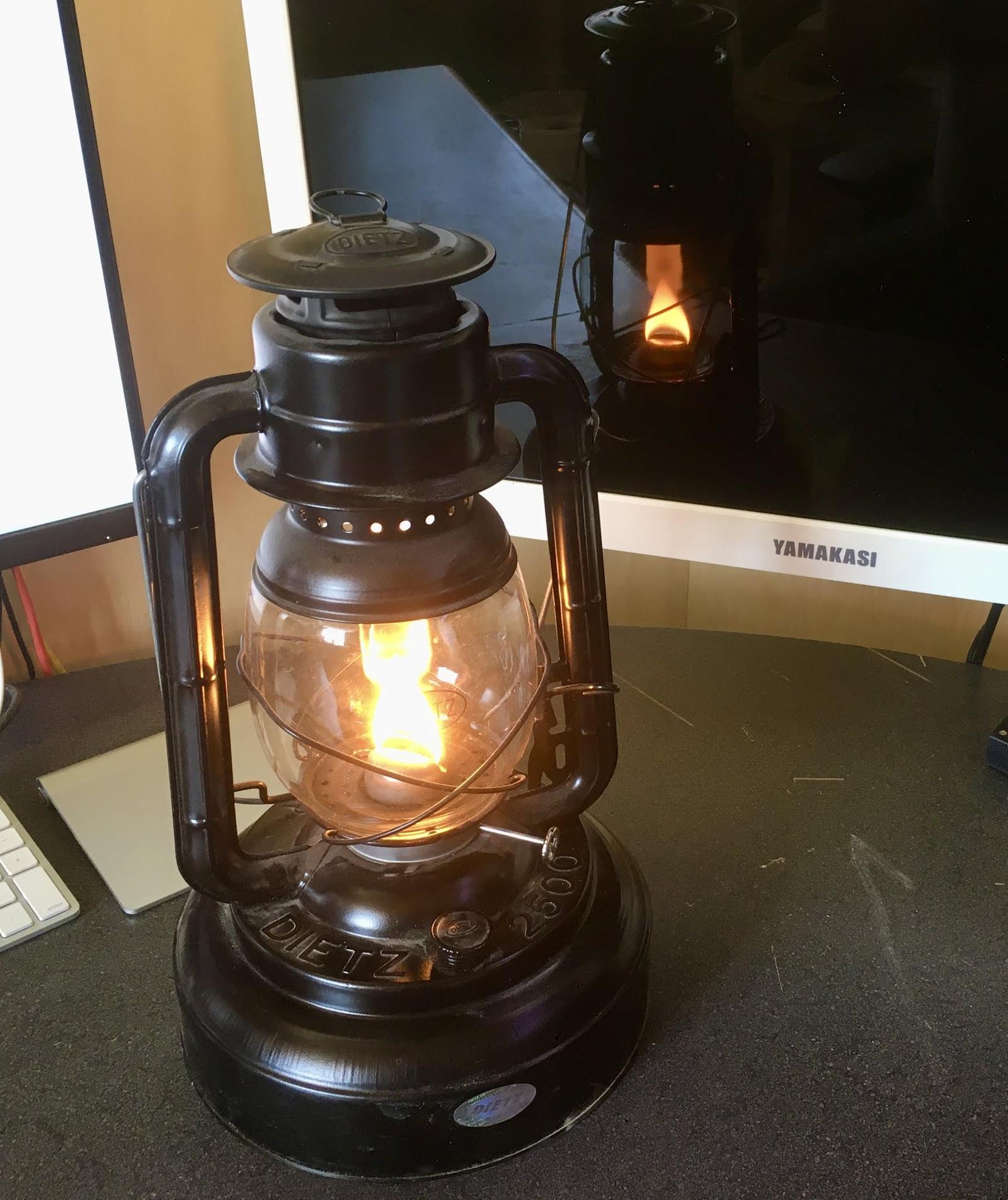
But what you should do is to have a shed that’s plugged in somehow. It’s up to you (and your local code) if this happens to involve a trenched power run (ideal) or an extension cord (far less ideal, but still entirely doable). Having grid power makes life radically easier, especially in the winter. You can leave a heater on low running and not have to come into a nearly-freezing office on winter mornings, you can leave computers on overnight (which happen to make good heaters in the winter), and it’s going to be far easier to use.
Get a shed, insulate it (no need for extreme insulation if you’re grid tied, but you will want to insulate the walls and possibly the floor for comfort), put up plywood walls, and have a blast. It shouldn’t take more than a week or two if you’re doing a grid tied shed with a prebuilt structure - and if you had a friend who had done construction, knocking it out in a week is totally doable.
Deep Work: Learn It, Love It, Build a Shed for it!
Deep Work is a term and concept that has been expanded by Cal Newport in a book of that name (eBay). It refers to the type of knowledge work that many people are engaged in today - programming, design, analysis, financial work, etc. Anything that benefits greatly from long, sustained periods of concentration could be considered deep work, and that makes quite a large chunk of the economy at this point in time.
The problem has been, we’ve gone off and created office environments (and technology environments) that are actively working against getting deep work done!
Email. Instant Messengers. Cell phones. All of these technologies work to interrupt us and keep us from getting things done - but yet, they’re the result of sustained deep work. iPhones don’t design themselves, and the software that drives our modern connected world is complex, difficult to write, even harder to troubleshoot, and requires years of experience to master.
Why have we done this? Mostly, they sounded like a good idea, “connectivity” is treated as a pure positive, and we like to believe we can multitask. We don’t multitask well at all, connectivity becomes a negative fairly quickly (at least in terms of deep focus), and we’ve just gone with the default instead of evaluating things properly. But, now? With Covid? We’ve got a pause. We can evaluate - and we can re-think the defaults. If you’re going to build a WFH space, design for this sort of work!
Working remotely gives you the opportunity to really manage your distractions. Joe from down the hall can’t just show up and pester you because he’s bored, and cause your mental state to come crashing down around your shoulders. If you control the distractions (and - don’t get me wrong - it’s hard to do this consistently!), you can accomplish amazing things.
Will WFH Last?
Finally, all of this is only relevant if the whole WFH thing is going to persist long term. Will it? There will be some variance, but I’m comfortable in saying that WFH, after 2020, will be far more common than it was before, to the point where investing some money in a solid WFH space - even if it’s not used every day - makes an awful lot of sense.
The big tech companies have given up on office space for the time being and said, “Sure, fine, WFH for the long term” - indefinitely or at least through the end of 2020, depending on the company. And almost every other company has, with their hand forced, come up with some way to increase WFH capability. Remote access now exists with proper capacity where it didn’t before, people have learned how to do online meetings instead of sitting around in a meeting room, and management has learned that the world doesn’t end if you have people working from home. None of this will go away quickly.
Not all positions are suited to remote work - but an awful lot are. And if you’re set up with a good location, you have the resources to drive yourself into those hard, challenging projects that involve a lot of growth, and a lot of doing excellent technical work. It’s entirely possible to get more solid work done in a day from a good home office than in weeks at a typical open office. If you can reliably do this, you’ll go far.
The Downsides of WFH
Certainly, working remotely has downsides. I’ve run into many of them. You don’t get to spend as much time with your coworkers in person, which can be a plus or minus. If you’re one of few remote workers at a mostly onsite company, it’s entirely possible to fall out of the various loops of information flow, and you might have to actively seek out what’s going on. Historically, it’s harder to get promoted at many companies when remote as well, just because you can’t play the politics games required.
But all of these are likely to change in the future as remote work goes from “Oh, yeah, that… weird guy out there…” to “All of us are doing it.” Being remote at a company that isn’t remote is rough. Being remote at a “remote first” sort of company is just fine!
I still won’t claim it’s as easy as being in the office. The upsides, though? Being able to shut out the world for 6 hours straight and just dive into technical projects, knowing that you’re not going to have someone tap your shoulder and interrupt you? It’s a superpower!
Build Your Office!
If you can, build a nice shed office out back. If you can’t do that, try to take over a room in your house as a dedicated office. And, failing that, toggle your normal computer space between home use and office use. Just don’t suffer through working from the kitchen table!
If enough people are interested, I’ve been considering a writeup on what works well in my office and what I’d change - let me know if that’s something you’d like to see!
Comments
Comments are handled on my Discourse forum - you'll need to create an account there to post comments.If you've found this post useful, insightful, or informative, why not support me on Ko-fi? And if you'd like to be notified of new posts (I post every two weeks), you can follow my blog via email! Of course, if you like RSS, I support that too.
